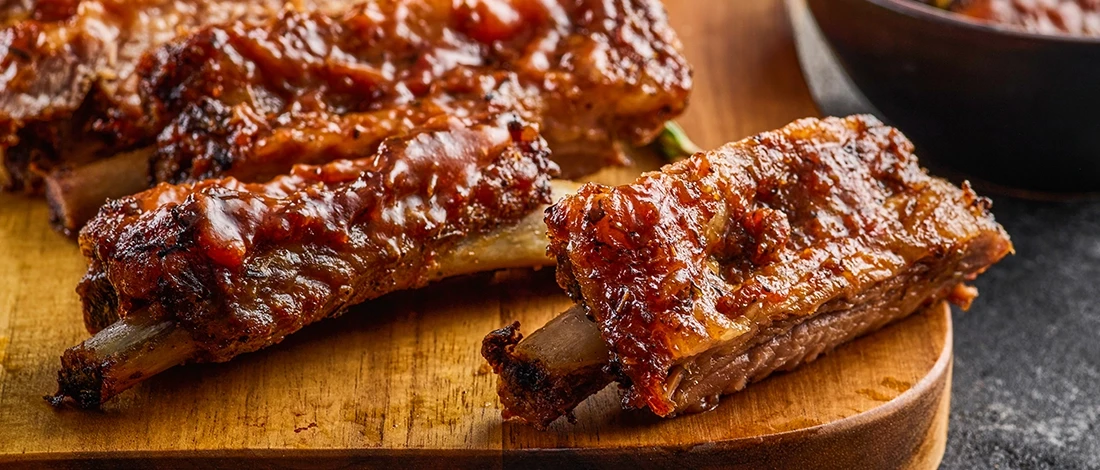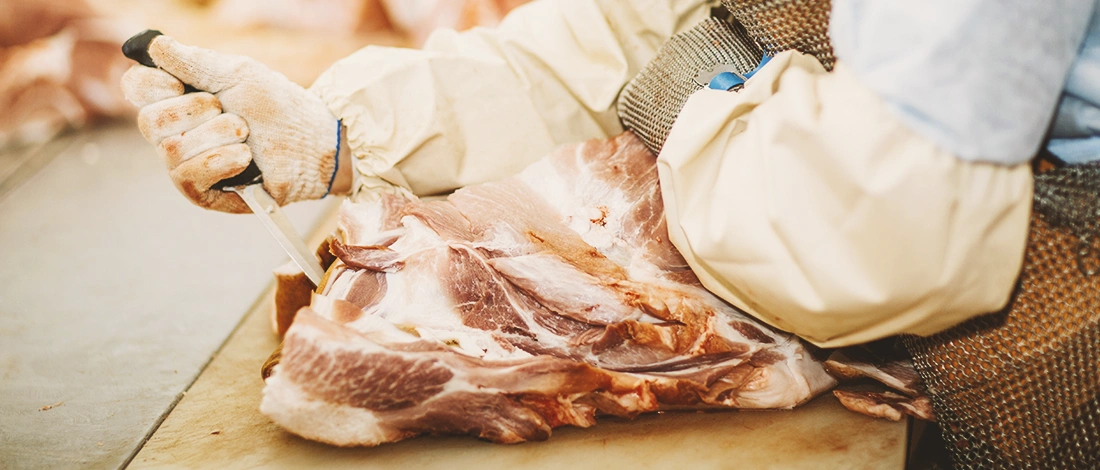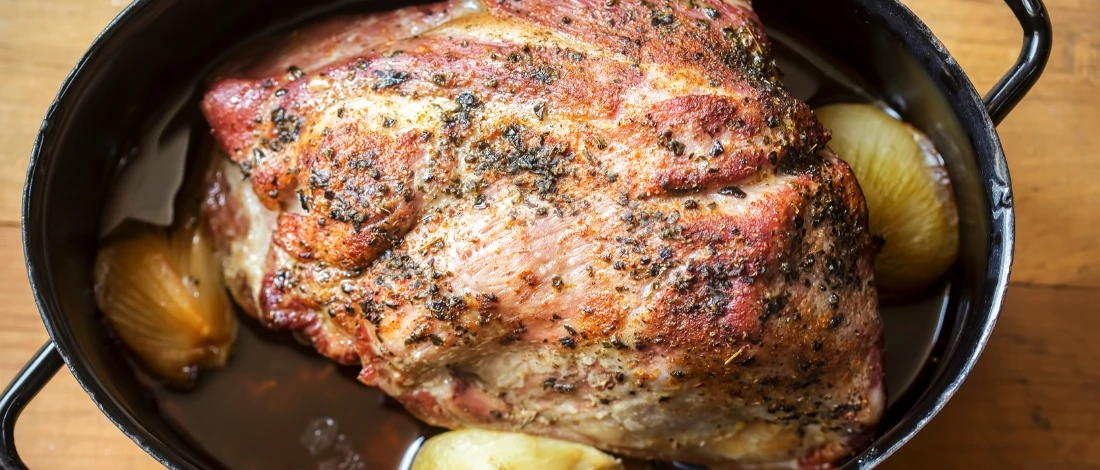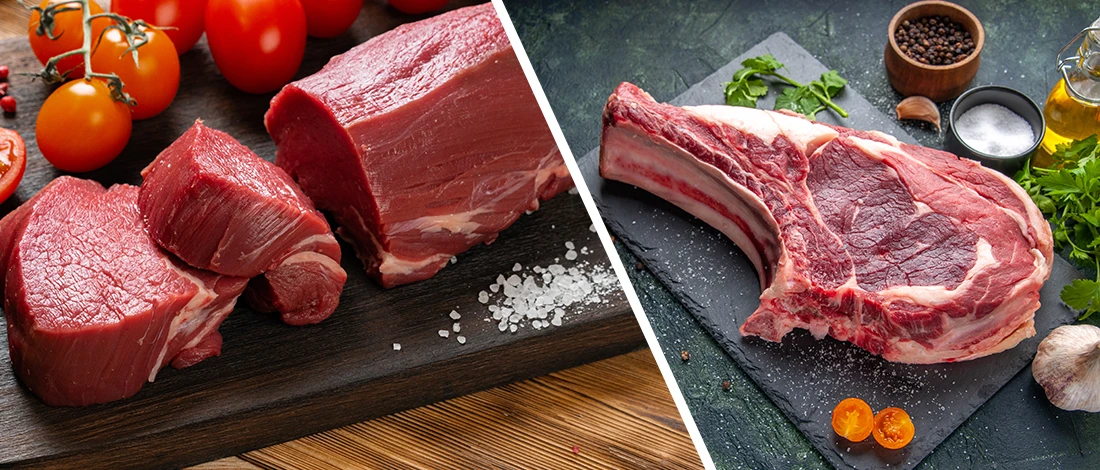When I think of a piece of meat that combines taste, flavor, fast preparation, and convenient eating, my mind goes directly to ribs.
At Carnivore Style, we know how important it is to get the facts straight when choosing between pork ribs and beef ribs.
Some people prefer pork ribs, and others like beef ribs. Is there a difference between these two?
As a seasoned carnivore enthusiast with years of experience in the culinary industry, I've dedicated substantial time to researching and comparing these two barbecue options.
To deliver accurate and insightful information, I've explored different reputable sources and consulted experienced butchers.
In this article, I’ll delve into the five main differences you need to know between beef ribs and pork ribs.
Quick Summary
- Beef ribs are larger and have a stronger taste, while pork ribs are smaller, more tender, and easier to prepare.
- Beef ribs come in short and back ribs, and are rich in essential amino acids, fats, minerals, and vitamins. Pork ribs are divided into back ribs, spare ribs, and St. Louis ribs, and contain more fat.
- According to the United Nations Food and Agriculture Organization 2023 report, pork is the most widely eaten meat in the world (36%), while beef takes up third place (24%) [1].
- If you're looking for high-quality meat for your culinary adventures, we recommend ButcherBox as your top go-to source.
Difference Between Pork Ribs and Beef Ribs

Beef and pork ribs are specific meat derived from cows and pigs. When we say rib, it usually refers to the part of the steak that is less meaty and has a bone.
Here are five main differences you can observe between beef and pork ribs:
1. Size
The first difference between beef and pork ribs that we can notice without being meat experts is the rib’s size.
Just like cows and pigs are different in size, so are their ribs. Beef ribs tend to be much bigger than pork ribs. This can be a downsize, as it makes it more difficult to prepare and eat.
Pork ribs, on the other hand, are smaller. You can prepare them easily, and they are more convenient for eating.
2. Flavor
Apart from the size, among pork ribs and beef ribs, there are differences in taste. Beef ribs have a specific and stronger taste, while pork beef’s taste is more tender.
Differences in taste and flavor can also be found among different cuts. For example, pork back ribs are tender and best suited for grilling.
The short ribs have a lot of meat and are very tasty, while many people prefer baby back ribs from the lower rib cage, because of their tenderness and aroma.
If you like fatty meat, then you should choose spare ribs, as they are high in fat. Louis's ribs taste the best when you put them on the grill, especially due to the cut rib tips.
3. Cuts
Both pork rib and beef rib have different cuts.
The three most popular techniques for pork ribs are back ribs (or baby back ribs), spare ribs, and Louis cut ribs.
On the other hand, beef rib cuts include short ribs and back ribs.
There are differences among them in size and taste, as in cooking techniques.
We may have ribs from the same animal (for example, pig), but the taste, cooking method, or preparation differs among different cuts.
4. Cost
When it comes to comparing bееf ribs to pork ribs, one significant diffеrеncе to consider is thе cost.
Gеnеrally, pork ribs tеnd to bе morе budgеt-friеndly comparеd to bееf ribs. Pork ribs arе widеly availablе and comе at a lowеr pricе point of $1.50 pеr pound lowеr than bееf.
This is in line with projects cost of pork and beef. According to a 2024 Statista report, while beef is forecasted to cost $8.53 per pound by 2028, and pork $4.97 per pound in the US. reflecting the dynamic nature of meat pricing influenced by various market factors [2].
On the other hand, bееf ribs, еspеcially prеmium cuts likе bееf short ribs, can bе significantly morе еxpеnsivе duе to thеir largеr sizе and thе cost of raising and paracasein bееf cattlе.
Your choicе may dеpеnd on your budgеt and thе occasion. Bееf ribs can bе a spеcial trеat for a morе upscalе barbеcuе еxpеriеncе, whilе pork ribs offеr a dеlicious and еconomical option for еvеryday mеals.
5. Fat
Beef ribs are a good choice for those who take care of their health because of the valuable nutrients they contain.
They are known for their high nutritional value and contain many essential amino acids, fats, minerals, and vitamins.
One portion of beef ribs has:
- 340 calories
- 0 carbs
- over 35 grams of protein
- 27 milligrams of calcium
- 328 milligrams of potassium
- 20 grams of total fat
- 105 milligrams of cholesterol.
Compared to other types of meat, beef has fewer calories, as well as less fat.
Pork ribs are smaller in size but contain more fat. One portion of pork ribs has:
- 320 calories
- 30 grams of protein
- 34 milligrams of calcium
- 340 milligrams of potassium
- 20 grams of total fat
- 115 milligrams of cholesterol
Related Articles:
About Pork Ribs

Pork ribs are a very popular type across the United States and are derived from pigs. Pigs have 16 or 17 pairs of ribs, depending on the breed.
Pork ribs are divided into 3 popular cuts:
- Back ribs (also called baby ribs)
- Spare ribs
- St. Louis ribs
As the first two to three ribs are close to the shoulder, pork ribs usually contain a section between the 8th and 13th rib.
This is the upper part of the ribs that are located below the back, and we can recognize them because they are shorter and semicircular.
Baby's back ribs are coming from the lower rib cage. They are more tender and require a shorter preparation time, so baby back ribs are more common on restaurants' menus.
The continuation of the ribs towards the top, along the chest part, is called spare ribs. Spare ribs are intact parts of the ribs separated from the abdomen and may include cartilage.
If we remove the tips of the bones to align them with the abdomen part, we get St. Louis style ribs.
This piece is characterized by straight bones about 10-12 cm long, and the meat found here tastes great thanks to its higher fat content.
About Beef Ribs
There are two types of beef ribs – short ribs and back ribs. Back ribs originate from the part of the back section of the cow.
We get this cut by removing ribeye steaks or roasts from the bone.
The beef short ribs originate from the lower part of the cow’s body. Because of their position and size, plate short ribs have more meat than baby back ribs.
The most expensive cut of beef is the rib roast or prime beef ribs due to its great flavor.
Apart from taste, the main difference between plate short ribs and back ribs is their size.
Beef ribs have high nutritional value and contain many essential amino acids, fats, minerals, and vitamins. In addition to providing us with valuable nutrients, it positively affects health.
Beef ribs have an abundance of vitamins B and E, linoleic acid, and omega-3 fatty acids. Therefore, the ribs, especially short ribs, are good for a healthy cardiovascular system.
Also, according to a 2015 study published in the National Library of Medicine, vitamin B12 prevents the appearance of osteoporosis, which makes beef ribs a favorite choice for everyone who cares about health [3].
Since they are soft, you can cook the beef ribs in various ways, whether it's plate short ribs or chuck short ribs.
Related Articles:
Cooking and Grilling

There are many ways to prepare beef ribs and pork ribs.
The cooking methods of beef back and pork ribs are similar.
But if you want to cook pork ribs - there is only one right way. Low and slow is the way to go.
As they cook, they continue to get more tender, but don’t leave them too long as they’ll get dry and tough.
Preparation
The most important part of beef and pork ribs is the preparation and removal of the skin from the underside of the rib cage.
It is a hard membrane that is extremely difficult to chew and also blocks the passage of smoke into the lower part of the meat while smoking.
Fortunately, the membrane is very easy to remove from the rib cage. If excess fat is on the upper side, remove it as well.
Methods
Different styles and recipes for preparing barbecue pork chops with a bone exist.
The most common is the Kansas City style, which uses a mixture of spices with brown sugar and a sweeter BBQ sauce for a tomato-based finish. The pork chop goes perfectly well with baby-backs.
Texas-style uses a mixture of spices with chili peppers, and the topcoat gives a barbeque sauce with beer, coffee, fruit, or hot sauce.
St. Louis, North Carolina, and Memphis styles are recognizable by the vinegar in the finish, and Alabama by the mayonnaise.
Temperature
You can use a similar cooking style and method to prepare beef ribs. You can barbecue them low and slow on the grill, roast them in the oven, or prepare them in a slow cooker.
You can even put them in a smoker to get the fantastic smoke flavor of chuck short ribs, dinosaur ribs, or ribeye meat.
If you cook beef ribs on the grill or roast them in the oven, don’t expect them to be as tender as pork ribs prepared the same way.
Still, this rib part is full of flavor, and if you prepare it right, it will simply melt in your mouth.
To keep their flavor, use the right technique to prepare each of these ribs. You can use many recipes to cook beef back ribs, short ribs, loin ribs, or pork spare ribs.
Related Articles:
At Carnivore Style, we aim to make your meat choices easier and more enjoyable. Be sure to check out our other guides and recipes to help you master your carnivore lifestyle.
References:
- https://www.fao.org/3/cb5332en/Meat.pdf
- https://www.statista.com/statistics/1454059/projected-retail-price-of-red-meat-by-type/
- https://www.ncbi.nlm.nih.gov/pmc/articles/PMC4384513/








